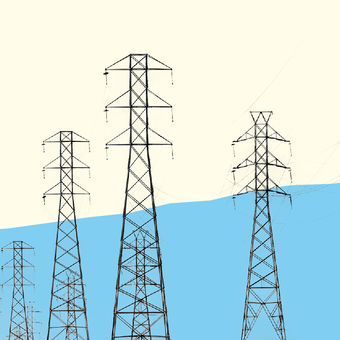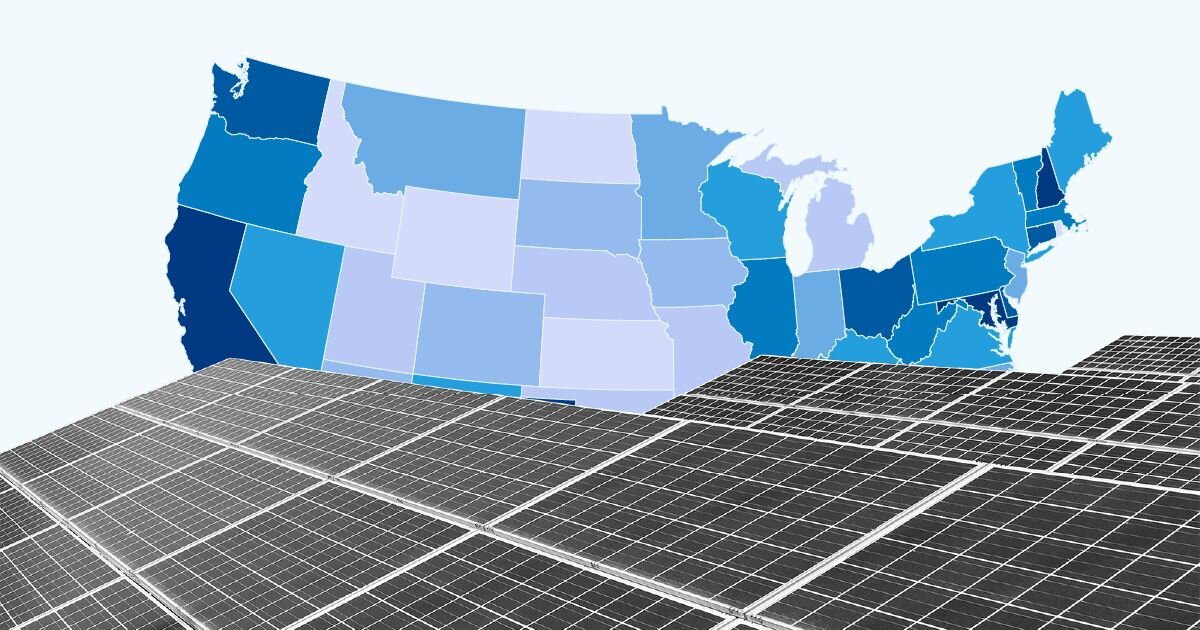According to the Army Corps of Engineers, the US has 91,804 dams across all 50 states, Puerto Rico, and Guam.
Approximately 65% of all dams are privately owned, while federal, state, and local government agencies own 31%. The remaining 4% belong to public utility companies and tribal governments, or remain unlisted.
Federal agencies, such as the Federal Energy Regulatory Commission, the US Army Corps of Engineers, or the Bureau of Land Management, own and operate 5,399 dams.
An estimated 41,264 dams — 45% of the total — are in Southern states, including:
- Texas (7,381)
- Kansas (6,427)
- Mississippi (6,114)
- Georgia (5,455)
- Missouri (5,401)
What are the largest dams in the US?
By volume — including the total number of cubic yards occupied by the materials used in the dam’s structure — the largest dam in the US is the Fort Peck Dam in Montana. The Fort Peck Dam, built in 1940, is one of six dams along the Missouri River responsible for reducing the risk of downstream flooding during extreme storms and snowmelt.
The Oroville Dam in Butte, California is the nation's tallest, at 770 feet. The structure was built for flood risk reduction, irrigation, hydroelectricity, and as a water supply for the surrounding area.
What purpose do dams serve?
Dams are built for a range of reasons and provide various public and private benefits, including:
- Recreation: Dams create lakes and rivers that serve as recreational spaces for hiking, biking, fishing, and boating, attracting millions of visitors annually.
- Flood risk reduction: Many dams collect, store, and release water, helping mitigate flooding both upstream and downstream.
- Fire protection: Dams store water to ensure a consistent water supply during emergencies.
- Stock or small fish ponds: Dam-created reservoirs and lakes provide habitats for aquatic species and migratory birds, enhancing biodiversity.
- Irrigation: Dams facilitate water distribution to crops and livestock. Large dams ensure a consistent water supply, and smaller farm dams direct water to specific locations.
- Water supply: Dams store and supply water for uses from daily consumption to industrial applications. They can work in tandem, ensuring water availability during droughts or shortages.
- Hydroelectricity: Some dams harness the energy from falling water to generate electricity that’s fed into local power grids.
- Navigation: A series of dams and locks support the safe transport of goods and materials on the nation's inland rivers.
- Waste management: Some dams, often called tailing dams, contain industrial waste and prevent it from harming the environment.
Subscribe to get unbiased, data-driven insights sent to your inbox weekly.
Less than 3% of dams in the US are used for energy. A larger portion are dedicated to recreation (32.7%), flood risk reduction (16.6%), and irrigation (8.3%).
Which states produce the most hydroelectricity?
In 2022, Washington produced 80.5 billion kilowatt hours of electricity through hydropower, more than double the next highest producer, Oregon. The average annual amount of electricity sold to a US residential home in 2021 was 10,791 kilowatt hours, meaning that the electricity produced in Washington could power approximately 7.5 million homes a one year.
More than half of the country’s total hydroelectricity production came from three states — Washington, Oregon, and New York.
In 2022, hydropower plants produced about 6.2% of total utility-scale electricity generated across the US, and about 28.7% of the electricity generated by renewable resources.
How old are American dams?
The average age of a dam in the US is 61 years.
For context, after 50 years a dam can be at risk of complete failure from deteriorating structures and metal rust.
Dams are also prone to buildup of sediment and chemical runoffs which impact their structural integrity. Risk factors include mechanical and hydraulic failures, spillway damages, and improper maintenance. Dam failures can occur with little warning and be disastrous to human life and property, depending on their location.
Because of these underlying risks, state and federal agencies regularly inspect dams for safety and structural soundness. Approximately 71% of all US dams are state-regulated, and 5% are federally regulated.
Dams are also categorized by their potential harm in case of failure: those that could cause loss of life are deemed “high risk,” and those that could lead to extreme property damage are classified as “significant risk.” A “low risk” dam implies that a failure or misoperation results in no probable loss of human life and low economic and/or environmental losses.
Approximately 30% of all America’s dams fall under a high or significant risk classification.
Of these high and significant risk dams, 4,076 were rated in poor or unsatisfactory condition, meaning they have safety deficiencies identified by regulatory agencies. An additional 8,419 dams had no available ratings on their current condition.
According to the Federal Emergency Management Agency (FEMA), non-federal dams nationwide require significant maintenance and rehabilitation.
What is the US doing about its aging dams?
Over the next five years, FEMA will spend $733 million to enhance dam safety and rehabilitate or remove aging dams. Funding will also provide technical, planning, design, and construction assistance grants for eligible high-hazard dams across 18 states and Puerto Rico.
This funding for this comes from the Infrastructure Investment and Jobs Act of 2021, which granted FEMA $6.8 billion for infrastructure projects that address climate change.
Where this data came from
This data was obtained from the National Inventory of Dams, maintained by the US Army Corps of Engineers in collaboration with federal dam regulating agencies, including FEMA.
Additional information on the hydroelectric output of dams comes from the Energy Information Administration.
Learn more about the nation’s infrastructure, including the number of electric vehicle charging stations across the country, and get data directly in your inbox by signing up for our newsletter.
Related environment articles
Read data analyses written by the USAFacts team.
Page sources and methodology
All of the data on the page was sourced directly from government agencies. The analysis and final review was performed by USAFacts.
Army Corps of Engineers
National Inventory of Dams
Energy Information Administration
Hydropower explained




